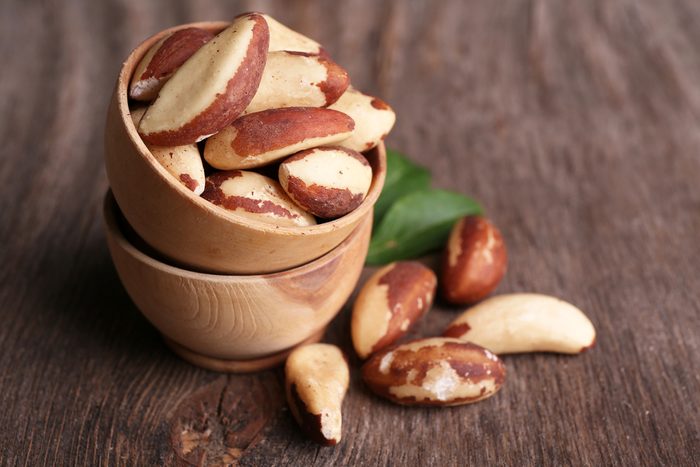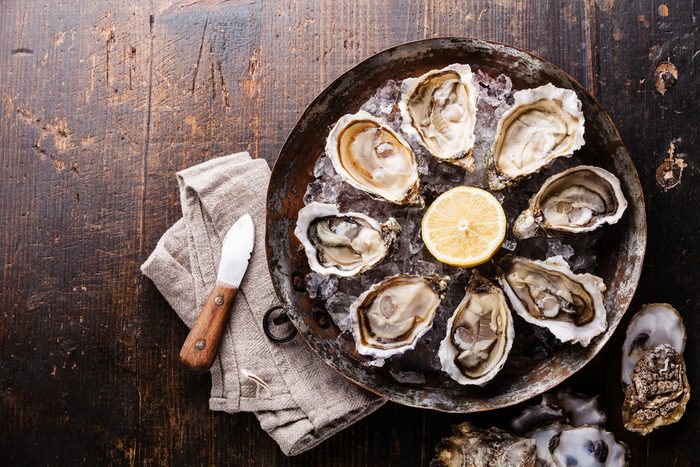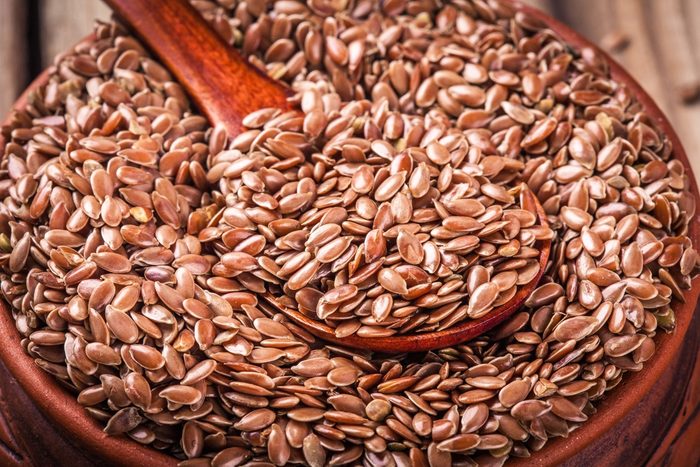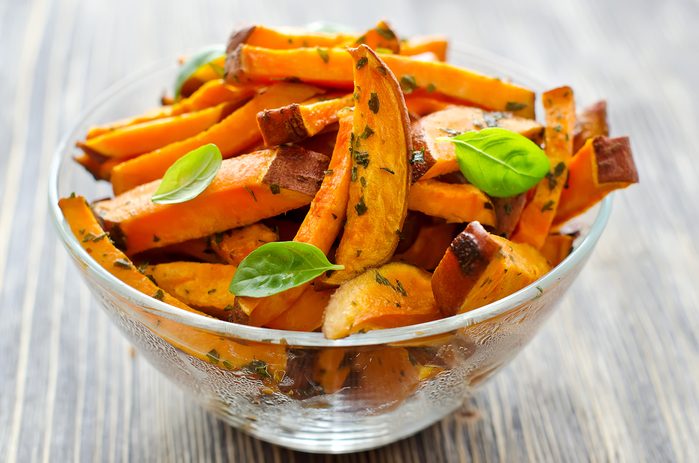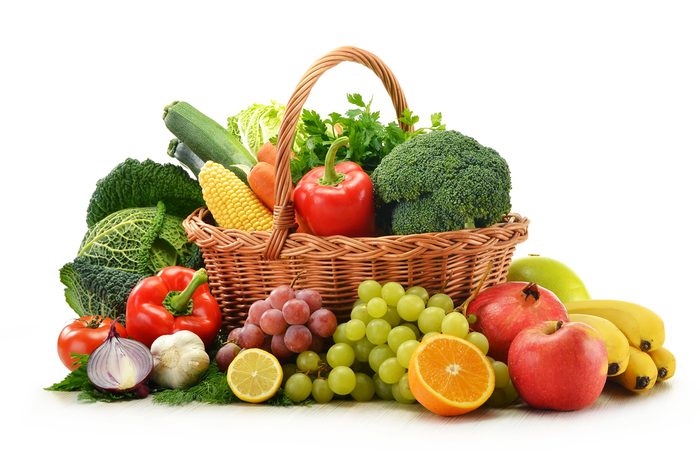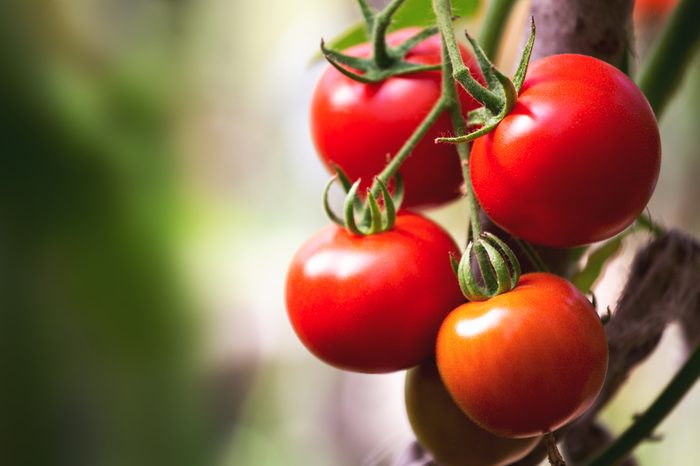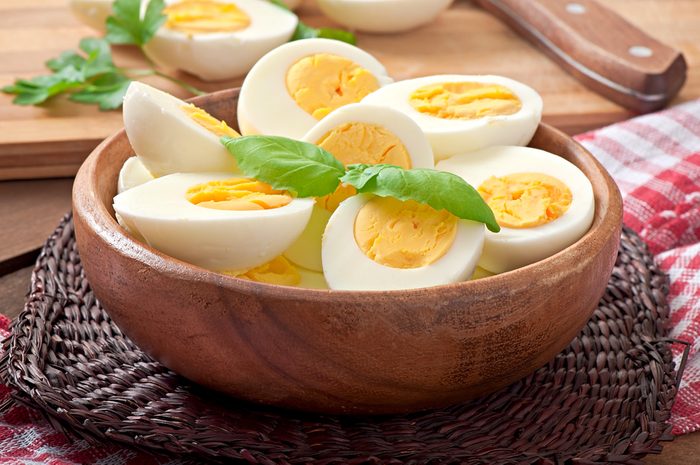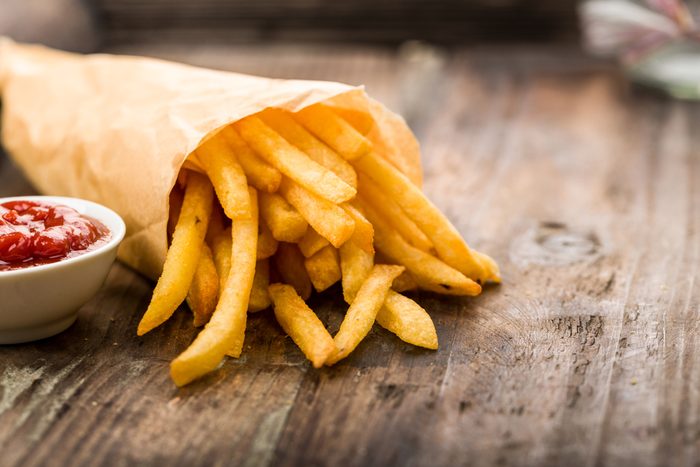Fight acne from the inside out
If you think pizza and chocolate are the bad guys behind breakouts, think again. These days, acne is blamed mostly on heredity and hormones. During puberty, a surge in male hormones called androgens (women have them, too) stimulates an increase of sebum, responsible for keeping skin moist, and keratin, needed to make hair. When too much of either clogs a hair follicle, acne can result.
Eating a cheesy pizza probably won’t make much difference to your skin, but what will make a difference-a positive one-is eating more fruits, vegetables and other foods that help keep hormones in balance and fight inflammation.
Brazil nuts
These are rich in selenium, a powerful antioxidant that appears to help improve acne, probably by protecting cells from inflammatory damage and preserving skin’s elasticity. Selenium works particularly well when it’s accompanied by vitamins E and A, so eat your Brazil nuts with some almonds and perhaps some red bell peppers.
Aim for: One Brazil nut delivers a full day’s supply. Other foods rich in selenium are meats, fish, poultry, onions, garlic and whole grains.
Oysters, beans, poultry, fish (and other foods rich in zinc)
No one knows exactly why, but getting enough zinc appears to help put the brakes on breakouts. It may be that zinc helps to control the release of male hormones that kick-start acne. Zinc also helps the body absorb vitamin A, another important nutrient for healthy skin.
Aim for: The recommended amount for men is 11 milligrams; for women, it’s 8 milligrams. Ninety grams (3 ounces) of oysters has 30 milligrams of zinc, while the same amount of dark turkey meat has 4 milligrams.
Helpful hint: Vegetarians who avoid animal products altogether should consider consulting a nutritionist for advice on supplementing with zinc.
Salmon, flaxseed (and other foods rich in omega-3 fatty acids)
Some dermatologists think that omega-3 fatty acids, which help keep inflammation at bay, may help keep acne under control. Fatty fish like salmon, sardines, and mackerel all boast omega-3 fatty acids, as do flaxseed and walnuts.
Aim for: At least two servings of fatty fish per week. You can also sprinkle salads with flaxseed oil, use ground flaxseed in baking and smoothies, and add toasted walnuts to casseroles and hot and cold cereals.
Sweet potatoes, carrots, cantaloupe, bell peppers (and other foods rich in beta-carotene)
Beta-carotene (found in many orange-, yellow-, and red-hued fruits and vegetables) converts in the body to vitamin A, another of the nutrients that helps to enhance selenium’s benefits to skin.
Aim for: At least 1/2 cup (125 mL) of red- or yellow-hued vegetables a day.
Fruits and vegetables
When scientists looked at the diets of teens in the Kitavan Islands of New Guinea and the Ache region of Paraguay-where not one case of acne was found-they took note: The diets were rich in fruits and vegetables like yams and greens and low in refined foods like white sugar and white flour, which can cause hormones to spike. When people from a similar gene pool started to eat refined foods, they began to experience acne.
Aim for: At least eight servings a day. A serving generally means one medium piece of fruit, 1 cup (250 mL) of raw produce, or 1/2 cup (125 mL) of cooked produce.
Oranges, tomatoes, melons (and other foods rich in vitamin C)
These juicy vitamin C bombs won’t cure you of breakouts, but because the vitamin strengthens cell walls, it can help protect your skin from scarring that blemishes can cause. Bioflavonoids, which often come from a C source (such as the white rind inside citrus fruits), also act as natural anti-inflammatories that can enhance the healing action of vitamin C.
Aim for: Eat enough vitamin C-rich food to total 250 and preferably 500 mg of C per day. A half cup (125 mL) of raw red bell pepper has 163 mg, and 1 cup (250 mL) of strawberries has 85.
Almonds, eggs, leafy green vegetables (and other foods rich in vitamin E)
The antioxidant vitamin E helps skin heal from damage and scarring caused by acne. It’s not easy to get a lot of E from a low-fat diet, but unrefined (minimally processed) vegetable oils, nuts, and whole grains are good sources.
Aim for: The recommended daily intake of vitamin E is 15 milligrams. One tablespoon (15 mL) of canola oil has 2 mg, and 30 g (1 ounce) of almonds has 7 mg. Some physicians recommend 200 mg or more per day, which you’d need a supplement to get.
Helpful hint: Vitamin E is fat soluble, so eat it along with foods that contain a little fat. When you eat kale or spinach, for example, drizzle on a little olive oil.
Off the menu
Iodized salt and other strong sources of iodine. For unknown reasons, iodized salt can cause acne flare-ups. Watch the amount of sodium you take in from prepared and processed foods and how much iodized salt you add from the saltshaker. Consider using sea salt, which is lower in iodine. Also limit shrimp and shellfish, which are high in iodine.
Refined foods. If you’re serious about stopping acne, scale back on the “white” foods in your diet-white bread, white flour, mashed potatoes, french fries and anything made with lots of sugar. They cause blood sugar and insulin to spike, and scientists suspect that those insulin spikes may contribute to acne. Diets full of refined foods and low in fruits and vegetables also come up short on magnesium, a mineral that helps to balance acne-inducing hormones.
Related:
• 5 foods to eat for healthy, glowing skin
• 3 foods that are bad for your skin
• 10 tips for an awesome complexion

